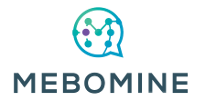


POSB338 Identification of Meaningful Aspects of Physical Activity Concept Elicitation By AI-Assisted Coding of Online Patient Conversations
- Bridges, M. Chowdhury, A. Tahsin, C. Bessant, M. Abdollahyan, F. Smeraldi, B. Byrom, Abstract and Poster, in: Value in Health, vol. 35, issue 1, supplement, pp S226, doi:10.1016/j.jval.2021.11.1105, 2022
Abstract
Objectives:
Wearable activity monitors (AMs) may enable measurement of physical activity (PA) in clinical trials, however little work has currently been done to identify aspects of PA most meaningful to patients to aid definition of pertinent AM-derived outcome measures. We explored the use of unsolicited data from online health boards (OHBs) to provide insights that may aid AM-derived outcome measure development in COPD, CHF and fibromyalgia.
Methods:
A combination of artificial intelligence and natural language processing was used to provide a highly targeted approach to identification of relevant posts from eight OHBs. Post content was labelled and summarised, and paraphrased quotes used to summarise findings.
Results:
383 posts (from 271 individuals) were identified for CHF; with 425 posts (315 individuals) and 304 posts (244 individuals) for COPD and fibromyalgia respectively. 131 individuals (48%) with CHF reported difficulties with PA (e.g., “I can’t walk 50 yards without needing to stop to catch my breath and recover”). A further 51 (19%) with CHF identified difficulty sleeping (“Most nights I feel like I’m drowning or can’t breathe”), and 43 (16%) difficulties doing household chores (“Taking the trash out or vacuuming leave me short of breath”). 106 individuals (34%) with COPD reported difficulties with PA (“I am supposed to exercise on a treadmill, but can’t walk across the room”) A further 56 (18%) with COPD identified difficulties doing household chores (“I can’t cut the grass, wash the car or vacuum”), and 39 (12%) with aspects of self-care. 98 individuals (40%) with fibromyalgia reported difficulties sleeping; 94 (39%) identified difficulty with PA; and 68 (28%) identified difficulties with productivity (e.g., work, hobbies).
Conclusions:
AI-assisted analysis of online patient conversations is an effective way to capture patient-reported impacts of disease and may contribute to concept elicitation knowledge important in the development of outcome measures
Website updated
09 Jan 2024
This website was written in Zim !